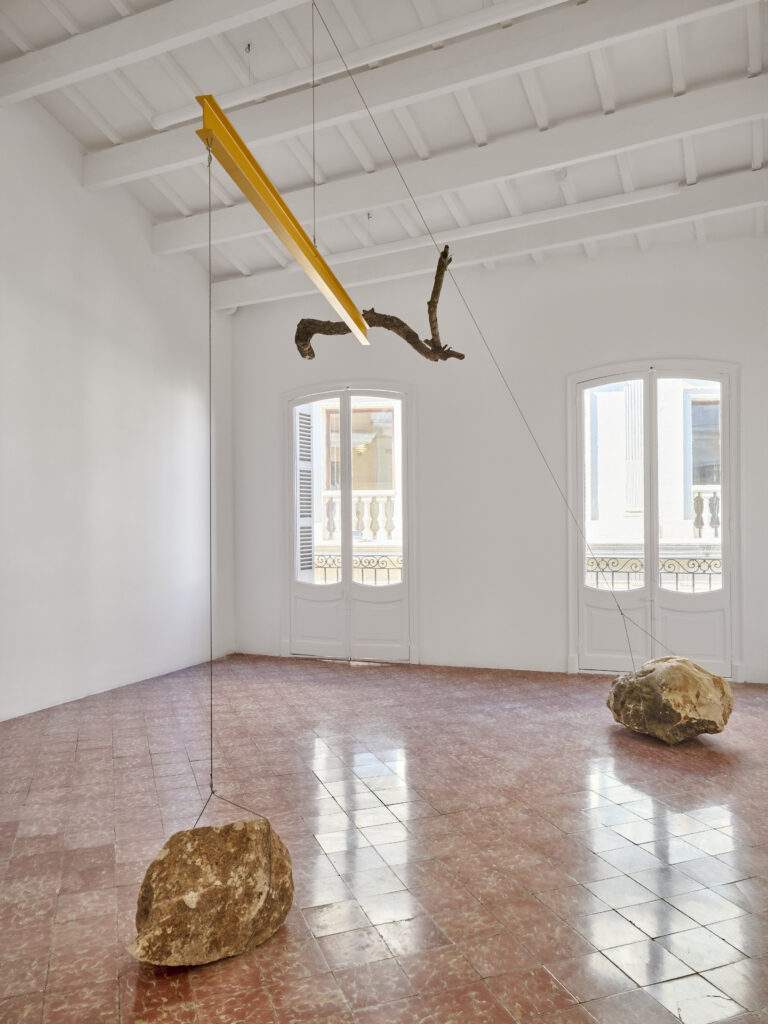Essay on Permanence
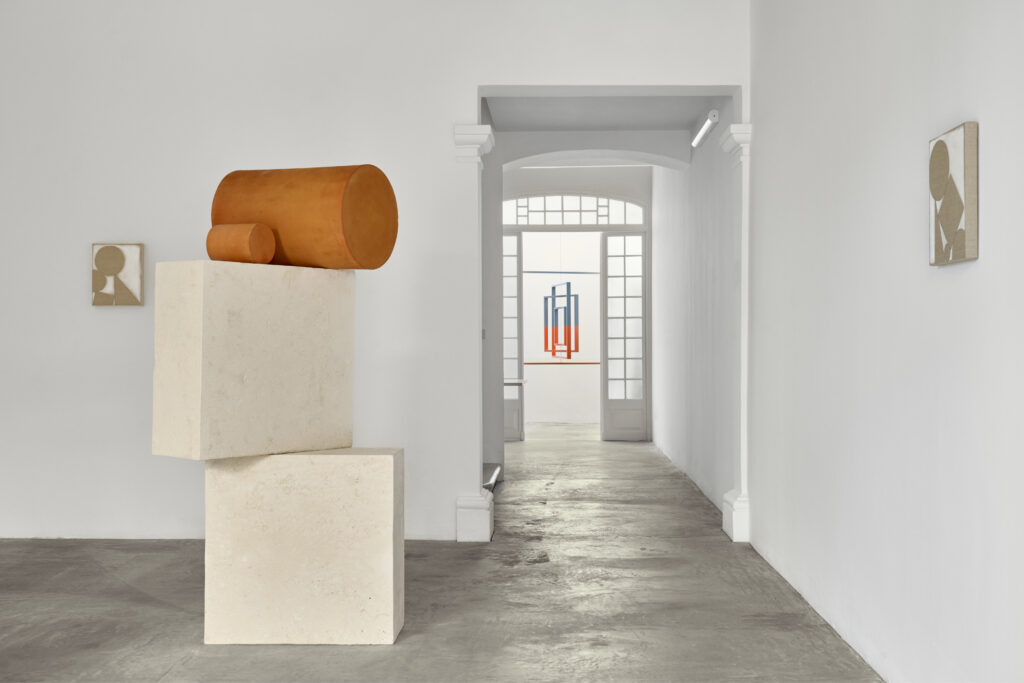
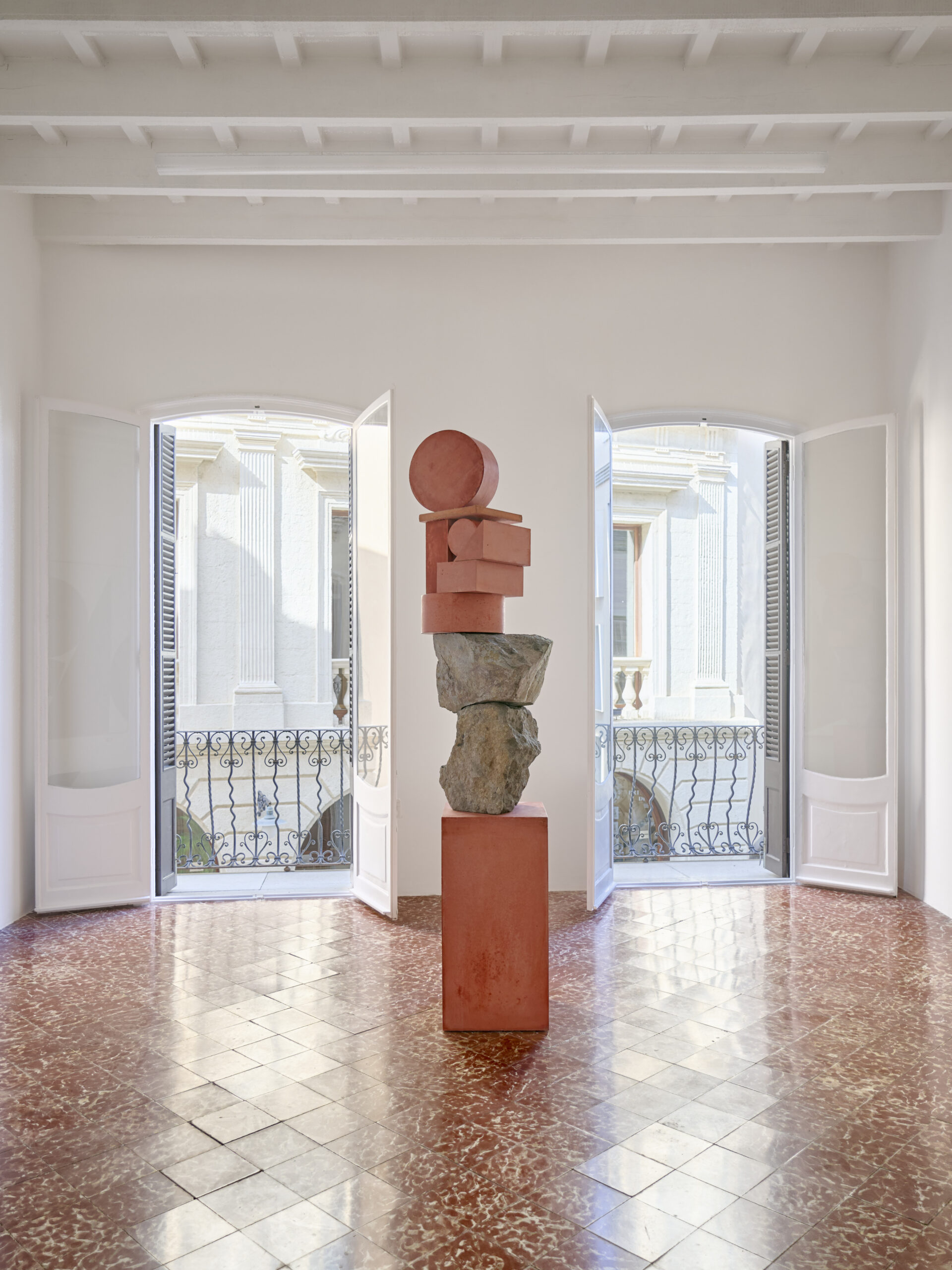
June 6 – October 16
This summer, Albarrán Bourdais presents “Essay on Permanence”, a solo exhibition by José Dávila at its Menorca gallery. For this first collaboration with the gallery, Dávila has conceived a body of work that includes new sculptures and paintings, some made on the island with local materials. Through these pieces, the artist continues his investigation into balance, gravity, structural fragility and the architecture of resistance.
Originally trained as an architect, Dávila translates the fundamental principles of drawing and construction into three-dimensional space, highlighting the physical mechanisms that allow objects to sustain themselves and occupy a place in the environment. His interest in megalithic structures – including the Talayotic structures of Menorca – connects his practice with primary gestures of occupation of the territory and observation of the cosmos, underlining an essentially human dimension in the way we relate to matter.
The series of sculptures “Fundamental Concern”, installed on the ground and first floors, draws from the ancestral act of placing objects, such as a stone, in space. From combinations of apparently contradictory forces, these works construct situations of unstable equilibrium, where gravity, more than an obstacle, becomes the agent that sustains and defines the form.
In the words of art historian Sacha Craddock, “Dávila’s works, often evidence of his own action with balance, tension and stress, never hide the mechanism beneath the façade they present”, making visible the tension between stability and precariousness, resistance and imminence. In dialogue with traditions such as minimalism and conceptual art, Dávila reinterprets common materials – cement, stone, steel – giving them new meanings through their interaction with space. The use of local materials from Menorca, reinforces this relationship between material, context and memory, and proposes a reflection on the correspondence between physical weight and symbolic weight.
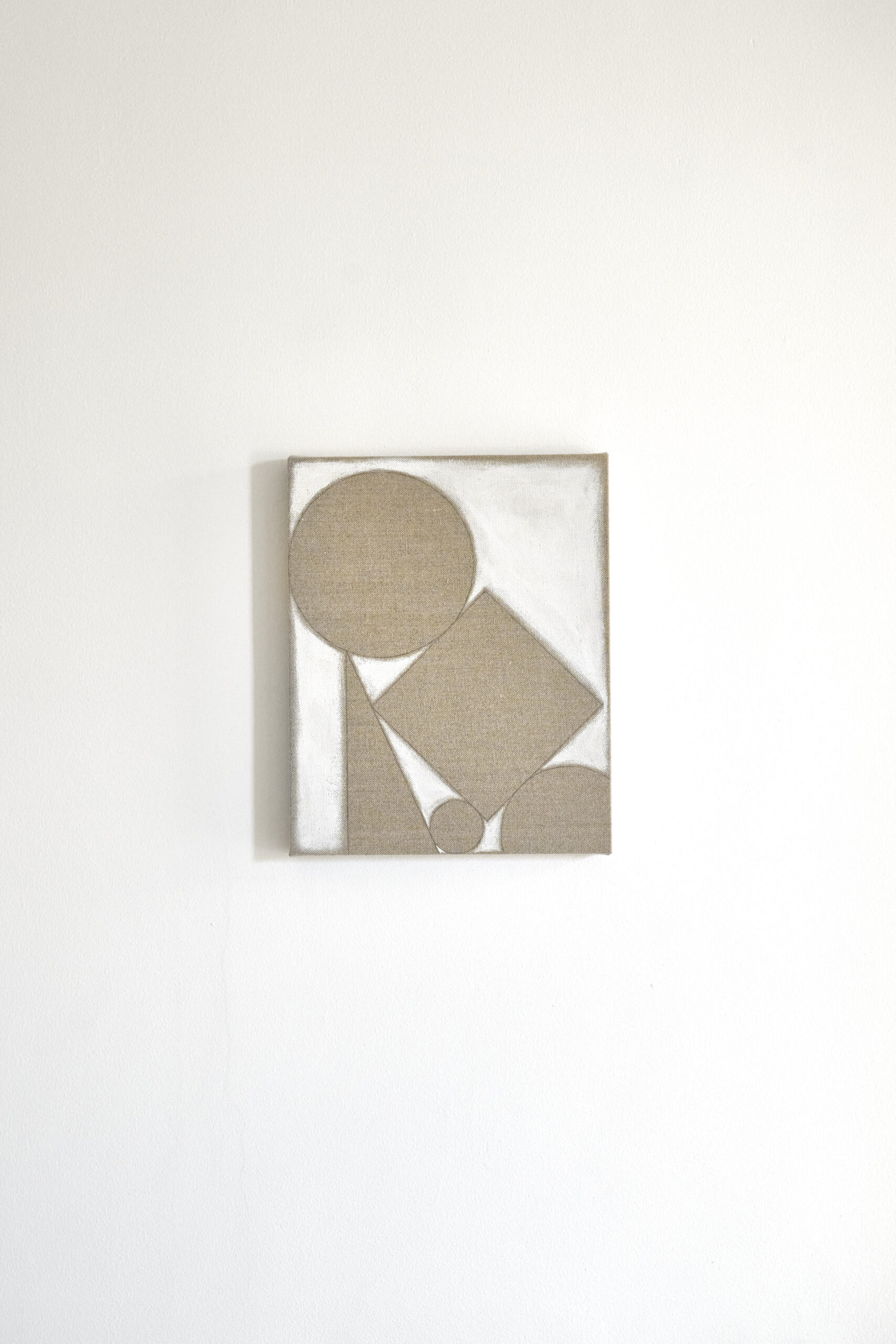
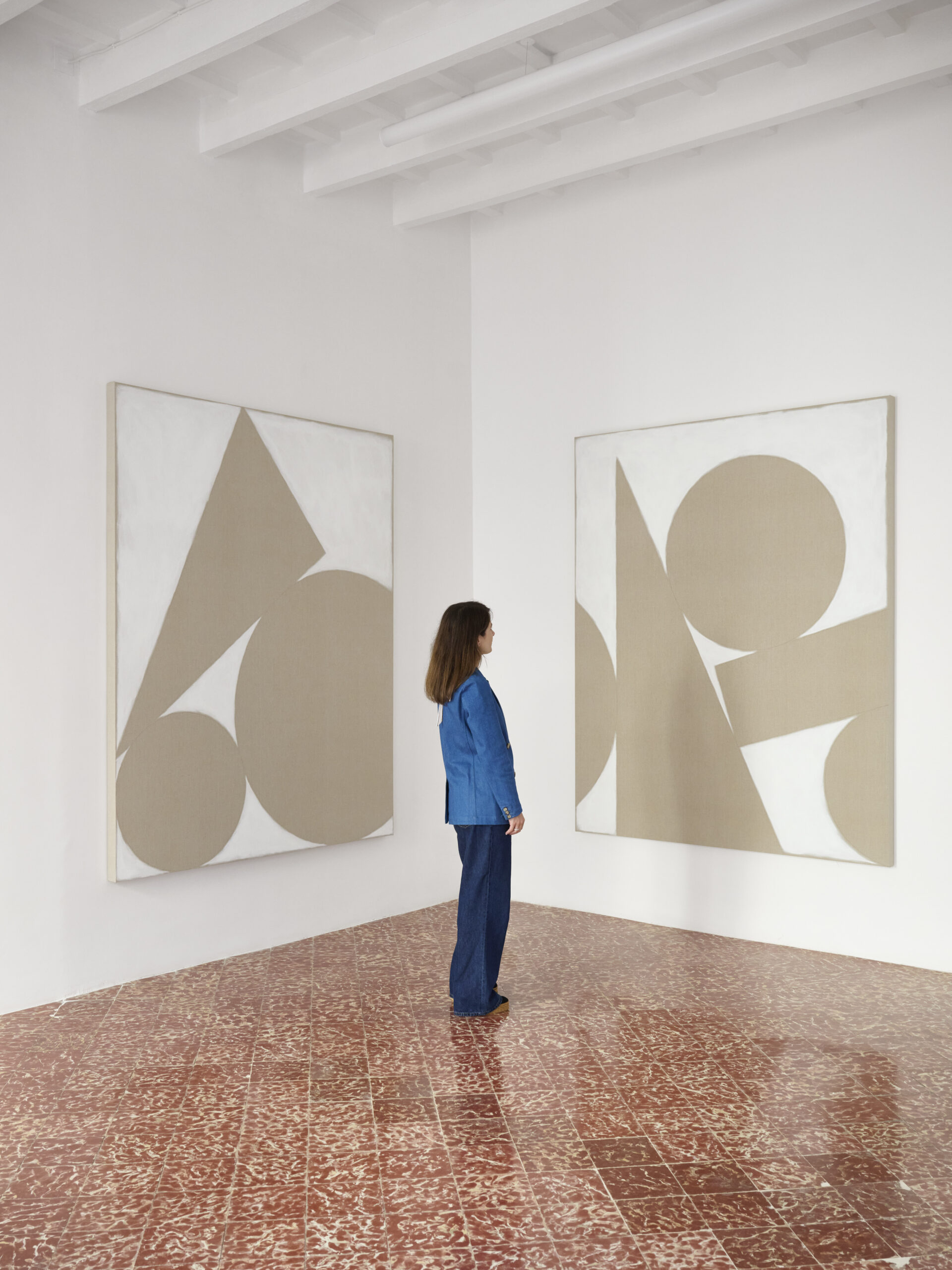
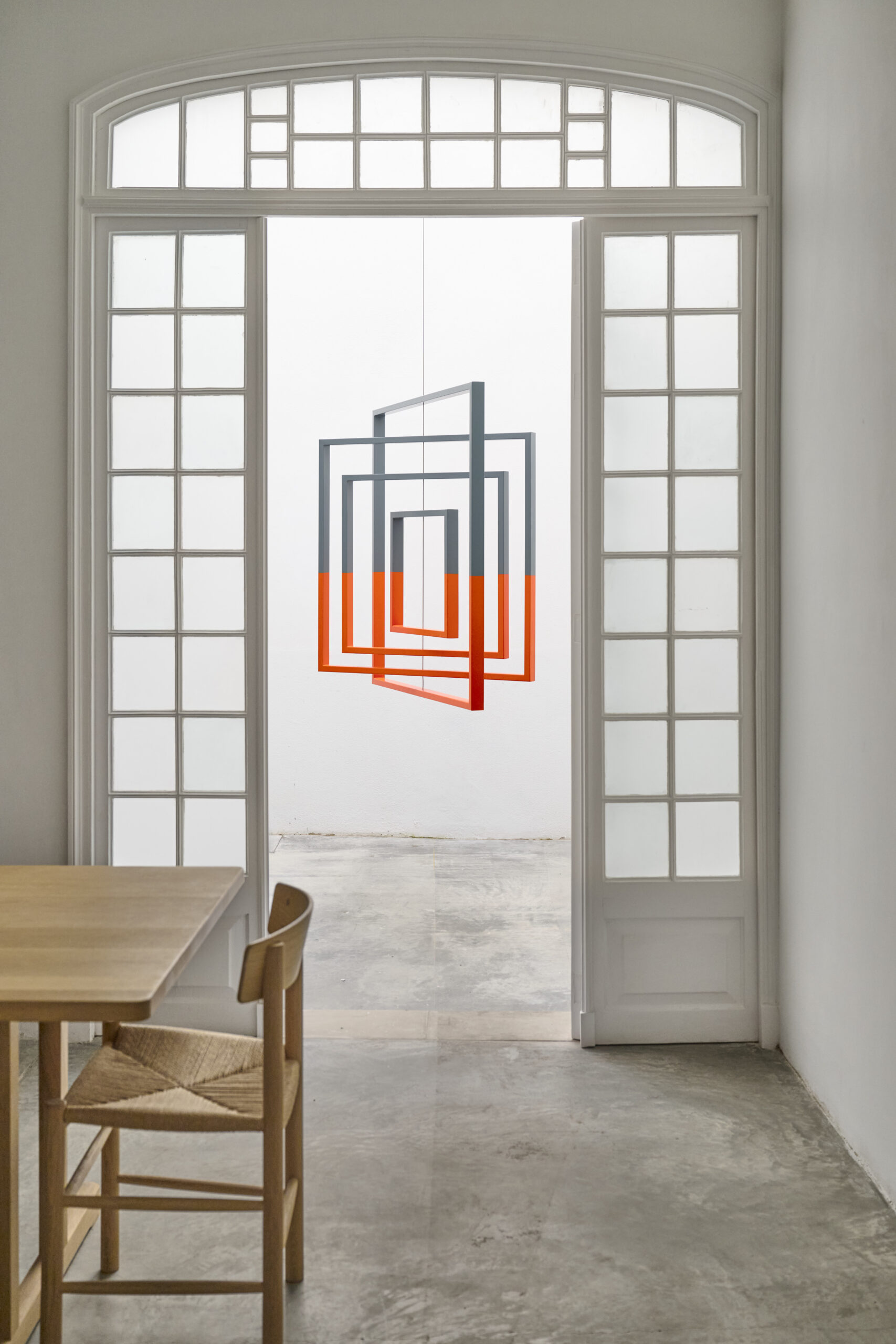
“Essay on Permanence” also presents the new series of paintings “Divisions of the Internal Space”, displayed throughout the manor house. On raw linen canvases, Dávila frames negatives of primary geometric shapes – circles, squares, triangles – delimited by applications of white paint. The tension between the organicity of the pictorial stroke and the geometric structure poses a meditation on the process of constructing meaning, where repetition, variation and interpretation intersect. The compositions invite us to think about an interior space both physical and metaphorical – that of the complexity of the human mind.
This series of mobiles, which Dávila has developed in recent projects such as his exhibition at the Gunma Museum of Modern Art in Japan, offers a reflection on the relativity of perception, gravity and time as sculptural matter.
Finally, on the second floor, a suspended installation composed of river stones, a wooden trunk and a painted beam poses a silent choreography of opposing forces. The arrangement of these elements, stretched in the air, suggests a temporality in suspension, a state of latent transformation. Each gesture of positioning re-signifies the object, emphasising the fragility of equilibrium as an expanded metaphor for our relationship with the environment.
In parallel to “Essay on Permanence”, José Dávila’s work can currently be seen at a major retrospective at Museo de Arte de Zapopán, at Desert X in Coachella and at Solo Sculpture Trail, the sculpture park that Albarrán Bourdais opens in Matarraña on 15 June.
